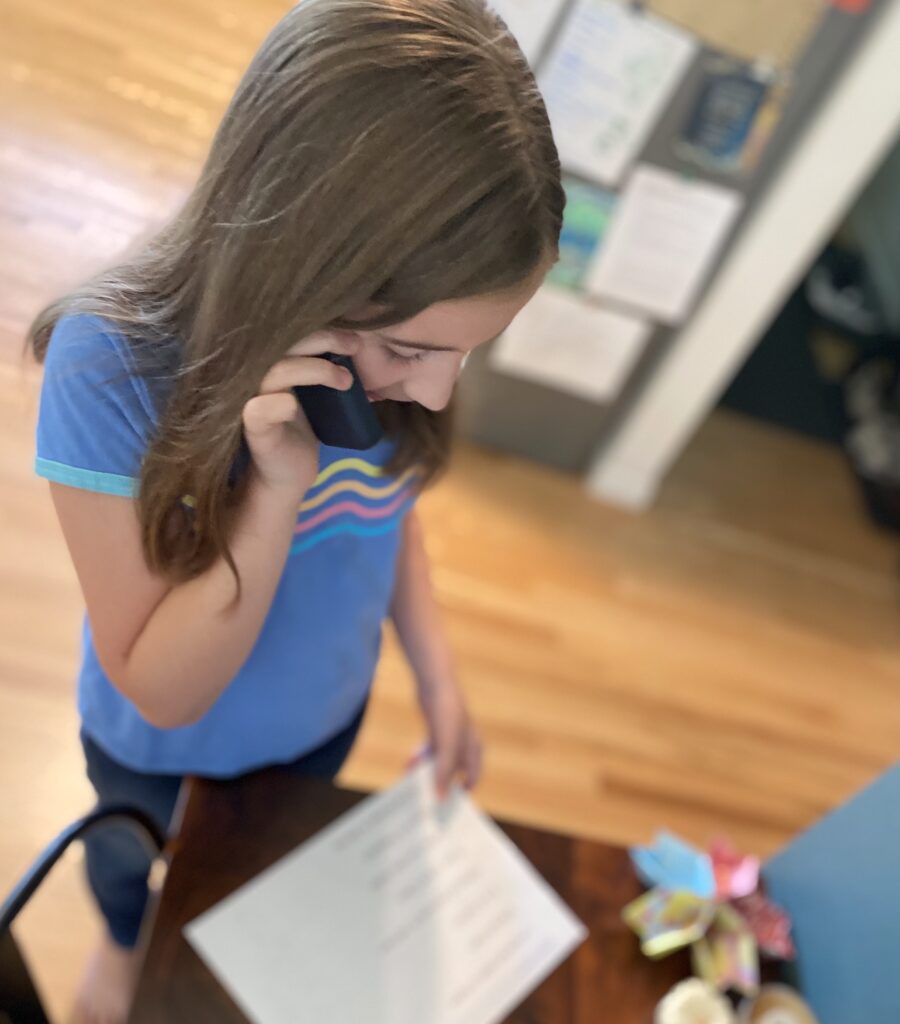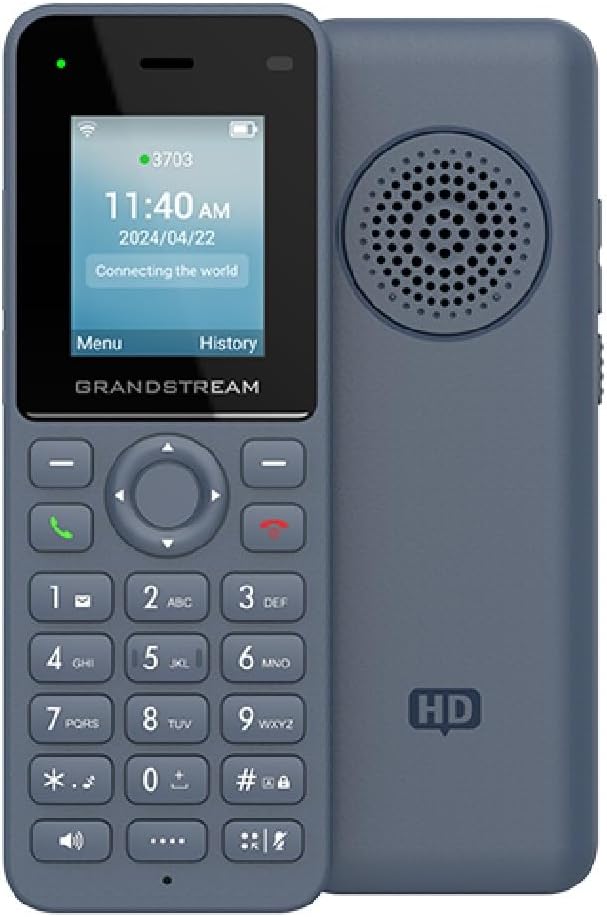A note from Andrea: A few weeks ago, I was in the office when I heard the sweetest sound drifting from our family room—my 6th grader giggling and chatting with her friend about their new school schedules.

But here’s what made it even more special: she was using our landline.
No notifications buzzing in the background. No tempting apps just a swipe away. No algorithms deciding who she should talk to next.
Just two kids being kids, talking and laughing together about the important things in their world.
It reminded me exactly why we decided to bring back the home phone.
Now, here’s Tyler with the details…
Remember When Phones Were Just… Phones?
Do you ever miss being able to talk on the phone without a constant stream of notifications pulling your attention away? Or wish your kids could call their friends without asking for your phone?
We’ve had these exact thoughts in our home. Because our younger kids (14 and under) don’t have phones, we could see that there was a huge obstacle to them connecting with their friends. We knew we didn’t want to hand over a phone yet, but we wanted them to develop phone etiquette and have more connection with their friends, so, we decided to try something radically simple: a home phone that’s just a phone.

You know – a single phone number that serves the whole house. No apps, no internet access, no distractions. Just communication.
But we didn’t go full retro with a rotary dial and a true landline. (Although we’re not ruling that out!) Instead, we chose a modern solution that combines today’s technology with yesterday’s simplicity: a VoIP phone.
What’s a VoIP Phone?
VoIP stands for Voice over Internet Protocol – basically, it’s a phone that works over your internet connection instead of traditional phone lines. Think of it as a landline that uses WiFi instead of those old copper wires.
Here’s why we love this approach:
For the whole family. Anyone can pick it up and use it – no passwords, no personal accounts, no “whose turn is it with the phone?”
Simple setup. We already have internet at home, so why run additional wires for a traditional landline? Our VoIP phone connects right to our existing WiFi.
Budget-friendly. We’re talking less than $1 per month for our setup. Seriously.
Real conversations. Kids actually talk instead of defaulting to quick texts. They’re learning phone etiquette, how to introduce themselves to adults, and the art of genuine conversation.
The Options (And Why We Chose the DIY Route)
When we started researching, we discovered there are basically three ways to get a home phone these days:
1. Through Your Internet Provider
Your ISP probably offers a phone line for about $30/month. They’ll give you a modem with a phone jack, you plug in any regular phone, and you’re done. Super easy, but also the most expensive option.
2. VoIP Services Like Ooma
Companies like Ooma specialize in home VoIP. You buy their adapter, connect it to your router, plug in a regular phone, and you’re set. Some even offer free service after you buy the hardware.
3. DIY VoIP Setup
This is where you choose your own VoIP service provider and buy a WiFi phone that connects directly to your internet. More setup time, but lower costs and more features.
This is the route we took!
Our Simple Setup

We went with VoIP.ms for our service and the Grandstream WP816 WiFi phone for hardware. Here’s what we get:
- All the features you’d expect: voicemail, call forwarding, blocked numbers
- SMS texting capability (old-school, character-by-character texting that makes kids really think about what they want to say!)
- No additional hardware needed beyond the phone itself
- Service cost: $0.85 per month plus pay-per-use for calls and texts
- Total monthly cost: less than $1
There are a lot of options out there, but this gives you a place to start.
Does It Actually Work?
The best part of this whole experiment? Watching our kids use it.
When the phone rings, they actually run to answer it. They have real conversations with their friends. They’re learning to navigate calling other families’ homes and speaking politely with adults who answer.
Our two younger kids have coordinated playdates, checked homework assignments, and built deeper friendships through actual conversation. There’s something magical about hearing kids giggle together over a simple phone call.
It’s independence without overwhelm. Connection without chaos.
The Unexpected Benefits
Beyond just eliminating distractions, we’ve discovered some wonderful side effects:
- Phone etiquette matters again. Kids learn to introduce themselves, ask politely to speak with someone, and leave proper messages.
- Family connection. The phone belongs to the whole household, not just one person.
- Perfect for babysitters. Caregivers can easily contact us or let kids call us without handing over a smartphone.
- Great for that tricky pre-teen phase. Kids get communication independence without smartphone responsibilities.
- Community building. Several of our friends have landlines, too (parents are calling it a “landline pod”!).
Ready to Try It?

If you’re curious about bringing back the home phone, here are a few tips to get started:
- Tell your friends! Communication works best when other families can participate too.
- Keep a contact list by the phone. Old-school phone book vibes.
- Perfect age range: This works especially well for kids aged 8-13.
- Start simple. You can always begin with an ISP or Ooma option and upgrade to DIY later.
Quite a few families are turning to the landline option. Perhaps you saw this article in The Atlantic: The Dumbest Phone Is Parenting Genius or the new Tin Cans phones or even the phones teens and young adults are asking for—Physical, which actually connects to your smartphone. Landlines are making a comeback in all shapes and sizes.
The sweetest sound in our house isn’t a notification chime or a video starting to play. It’s the sound of genuine laughter during a real conversation between friends.
Maybe it’s time to bring that sound back to your home too.
Have questions about setting up a home phone? Curious about our specific setup? Drop us a line – we’d love to help more families discover this simple solution for staying connected without staying glued to screens.

0 Comments